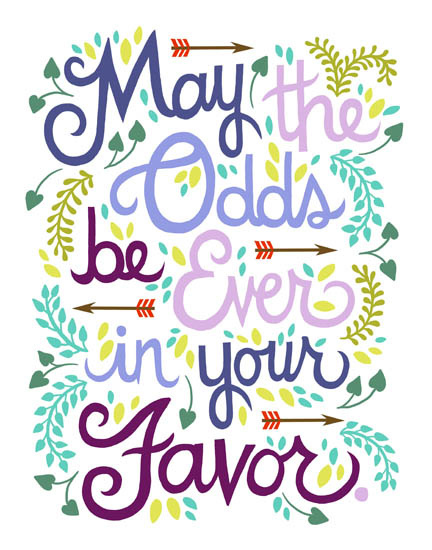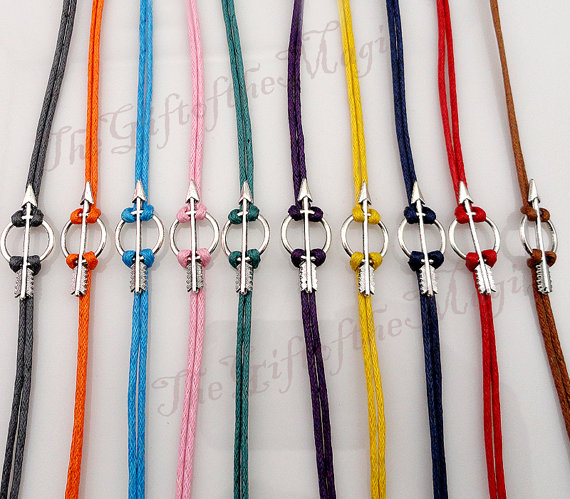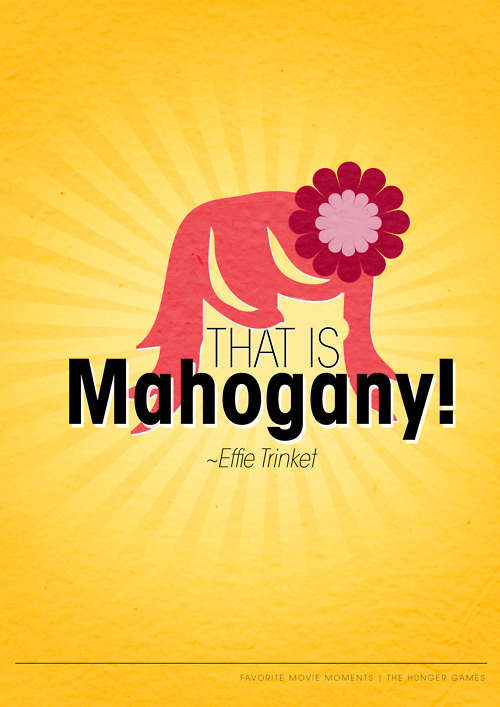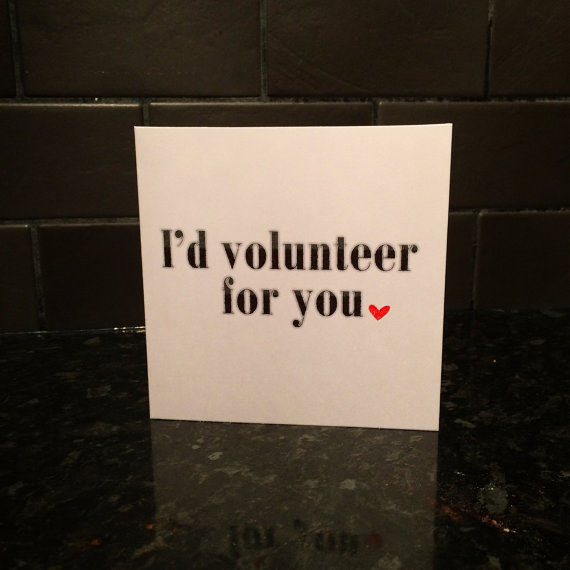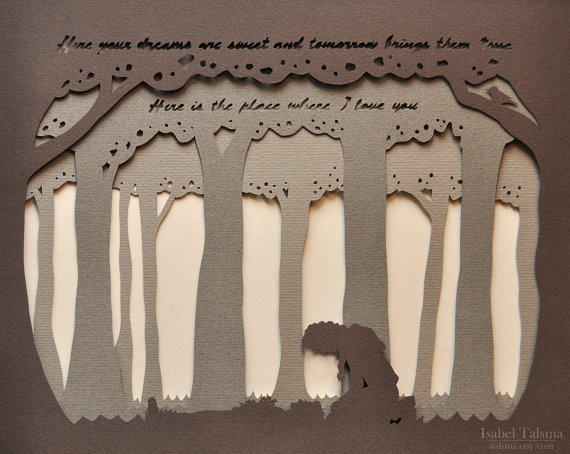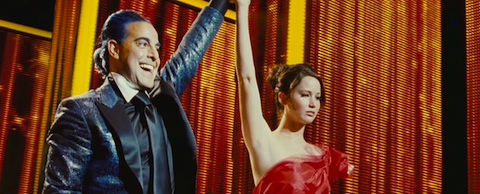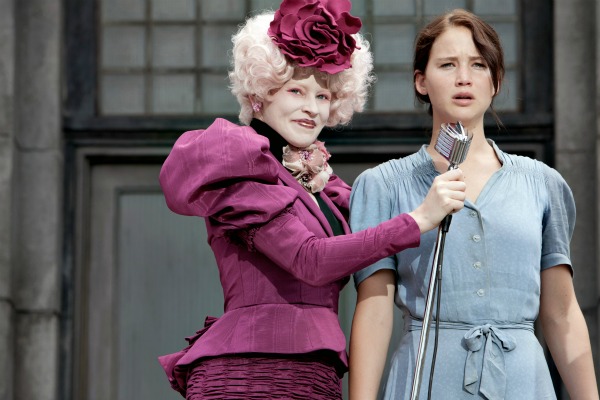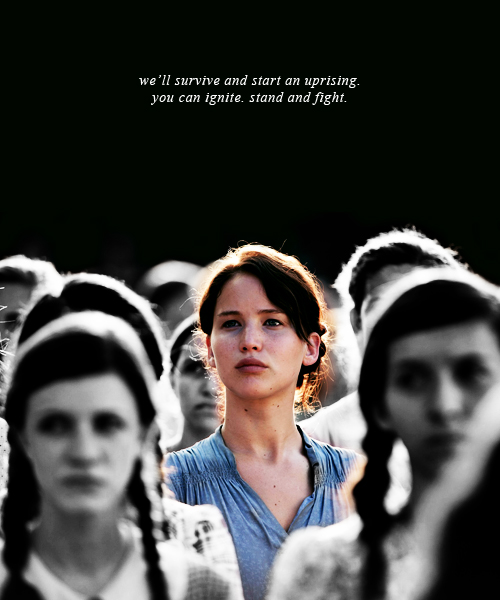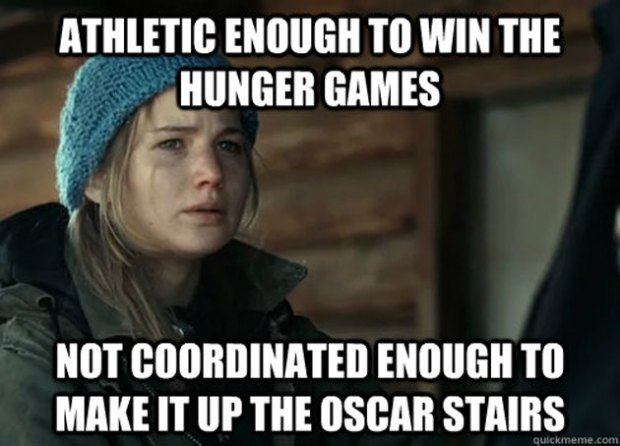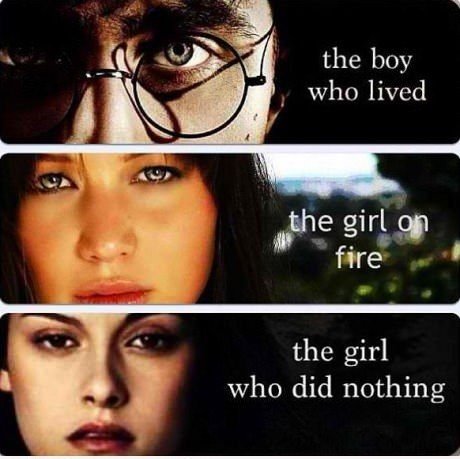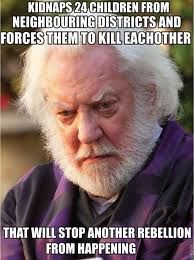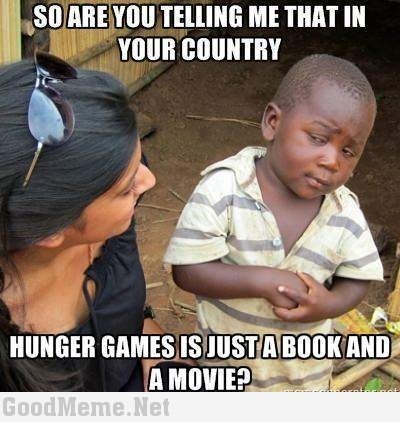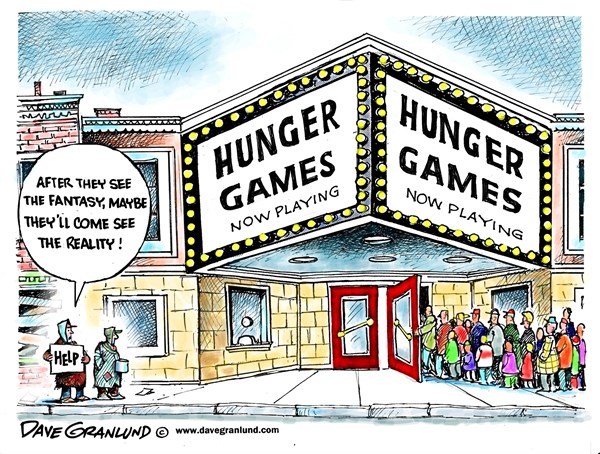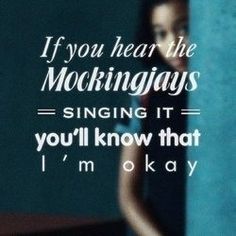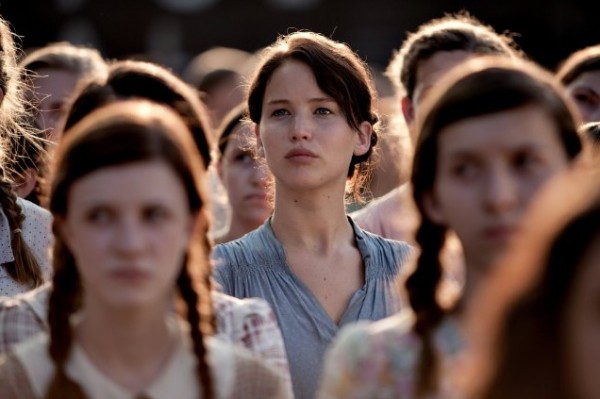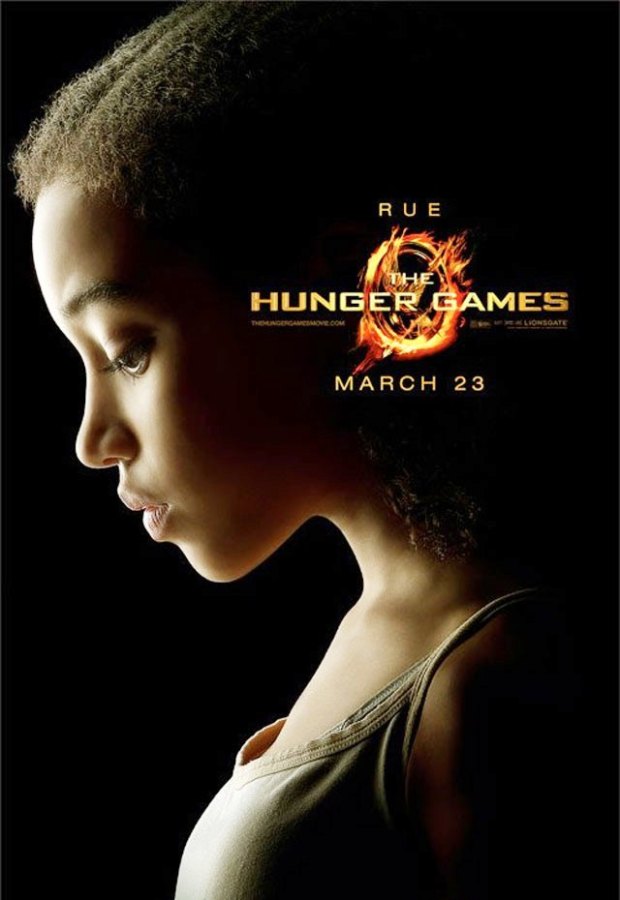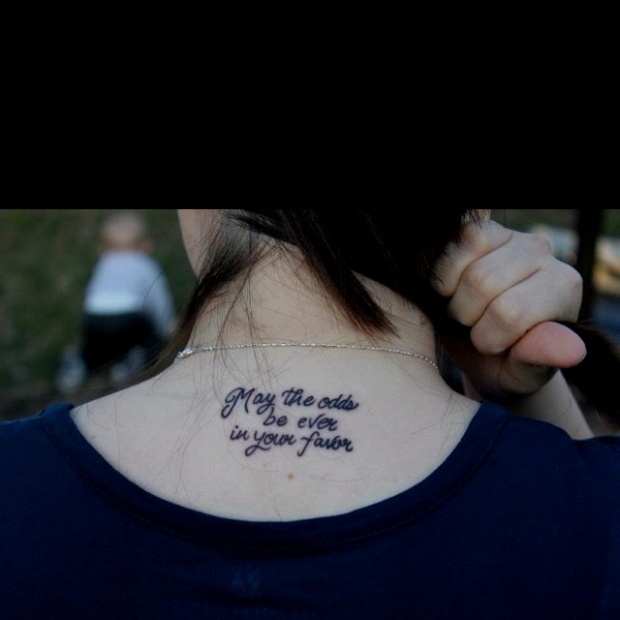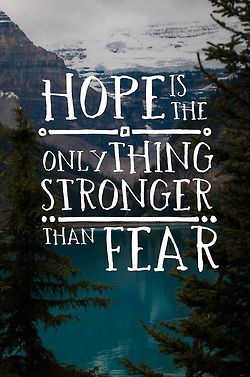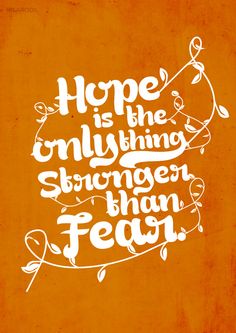The audience is very much positioned by the narrative, as all audiences, by all narratives. The Hunger Games gives little room to question the system in place that perpetuates the fear and the compliance and the yearly sanctioned murders of innocent children. We question the media and the control of the technology and the blurred lines between what is real and what is not.
There are certain things lost with the visual representation of the film that depicts the text narrative. In the film, the other tributes, especially the careers lose the identity as victims of this diseased culture. They are, instead ‘others’, so it is acceptable to our sensibilities that these children have lost their lives. They are exaggerated, evil, mean-spirited, cruel – all characterizations of the worst and we are caught rooting for their end.
The story of the Avox girl and the realization that Katniss has of her place within society, the other tools that are in place to demand complacency is not explored in the visual as it is in the text. This is a story that humanizes Katniss, makes her feel for someone who has been punished by the Capitol. These are elements that are removed from the film. It goes to question whether the spirit of the message claimed by Collins is sacrificed for the ability to perpetuate entertainment value instead.
…………………………………………………………………………..
With the abilities we have today, to share ourselves, to strive for the authentic self, to present our identities, our digital selves through internet platforms, our own bodies, our preferences we can broadcast on our profiles, our walls, our lifestyles, it is interesting to muse about what these items we take from The Hunger Games narrative illustrate of our culture, of our ideologies, of ourselves.
Easy to post on your wall, on your timeline, in your profile. The public relations statement used to remind a poor and starving District that they are sending two children to a duel to the death and although there is a possibility, and the odds may tilt to their District, there will be loss, there will be only one returning, if at all.
Or perhaps it’s a sign that things are possible, even when the odds are stacked against you, if you know the game, if you choose right, if greater things are meant to come – if Katniss could create her own way out, than favour is possible for you as well, for you have the sign and you know what it means and now, it is a part of the fabric that keeps you warm and nourished always.
The bow and arrow sets Katniss apart, gains her attention and saves her life as well as the lives of her family members. It is a connection to her father. And now, it is her connection to you, as you proudly wear her strength, her ferociousness, her ability to survive. And that all comes from a moulded piece of metal, right?Available in many colours, so not only is Katniss represented, but your personality can be as well….the consumerism drives on.
Districts are stripped of technology, besides the images that the Capitol label as ‘must watch’. Our Smartphones connect us to everything. They allow us to be categorized, tracked, sorted, profiled and commodified. All things that the narrative warns against. And we decorate this technology with the most memorable statement from the text and the movie.
Effie Trinket, the mouthpiece from the Capitol, sent to choose and usher the children from District 12 to their most certain death. She is suffered by her meagre pool to take from, as District 12 so seldom wins. But, she remains poised and upbeat, troubled by those without manners. The above statement could be seen as a commentary on the understanding that although you are taking children to the place where their lives will end, as you have so many times before, your excitement is raised because a piece of wood is damaged. I fear that the reality of this statement is lost because of the humour it carries in Elizabeth Banks’ delivery. It is curious to dig into the story one would wish to tell, the connection that is meant to be made by hanging this on the wall or posting it to your timeline and what message it is intended to send to the others who see it. I would hope it’s more than just the humour and the horror is remembered as well.
Katniss volunteers out of obligation to her sister, a desire to protect her life, save some of her innocence. She feels it is her responsible to rescue her sister from the inevitable loss of Prim’s life and sacrifice herself in place of her sister. Your own devotion, willingness to sacrifice and unconditional love can now be sent through the mail, consumed and understood by the masses in four simple words.
This artwork allows the displayer to forever visualize one of the most poignant and meaningful scenes in the narrative. Katniss is no longer a pawn in a game, no longer a mere form of entertainment. She gains humanity, along with Rue. She has meaning, she has value. She deserves mercy and thanks and most certainly consideration. She reminds those watching that she has value, that Rue has value, that these children are sacrificed for the sake of entertainment. What else is being sacrificed? What else has been lost?
It is also big business to be on the soundtrack of a blockbuster, especially as a title track of a franchise film. Just as Christina Perri’s A Thousand Years will always bring to mind Twilight, Taylor Swift’s Safe and Sound will forever touch on the loss of Rue, the importance of childhood, the safety that came in death and the problem with it all. Playing this song will always serve to create an emotional and visceral connection to the film, the story and the characters.
Sponsorship means survival. It means a parachute with a tiny piece of hope for survival. It is the ability of sponsors to feel like they are part of the excitement, like they can somehow influence the outcome. And now, we can make our own parachute cookies.
PhysEd class will never be that of life and death. It is a far stretch to link the exertion needed to compete and conquer in the area as anything like that which is needed to pass P.E. Another way to capitalize on the franchise, another method to connect members of the culture and consumers of the narrative. Again, considering the fact that the text comments on the tyrannical power of those in charge against those who are not, the ability to control the media, to surveil the lives of whomever they chose and the yearly ceremonial assassination of twenty three children, all in the name of fear, all in the name of entertainment – it’s a scary parallel. To think about the inequality that exists for real, the tongue-in-cheek message that this shirt is looking to communicate is real in some places in the world. There are regions in the world we live in where the less fortunate die, the powerless face fear tactics to keep them in line. Children are sacrificed and are mutilated and we can mark our identity with a shirt like this. It’s just something to consider and wonder whether the message of caution is more important than the motion of capitalism or vice versa.
Much like the previous greeting card, a message that resonates within popular culture can be communicated in four words, no further explanation needed.
It is important as we create these selves that we display for others to consume, as we reflect that which we consume we understand and actually identify with the images, the music and the items we use to represent ourselves. Otherwise, there is nothing real to connect to, nothing real to build from, nothing real between us and little reason to buy in to the new shapes and meanings of the identity we are presenting as self.
SOURCES USED IN THIS POST:
Gutierrez, Peter. Death by Media: The Hunger Games and Teen Authenticity (Part 2). March 22, 2012. Link.
